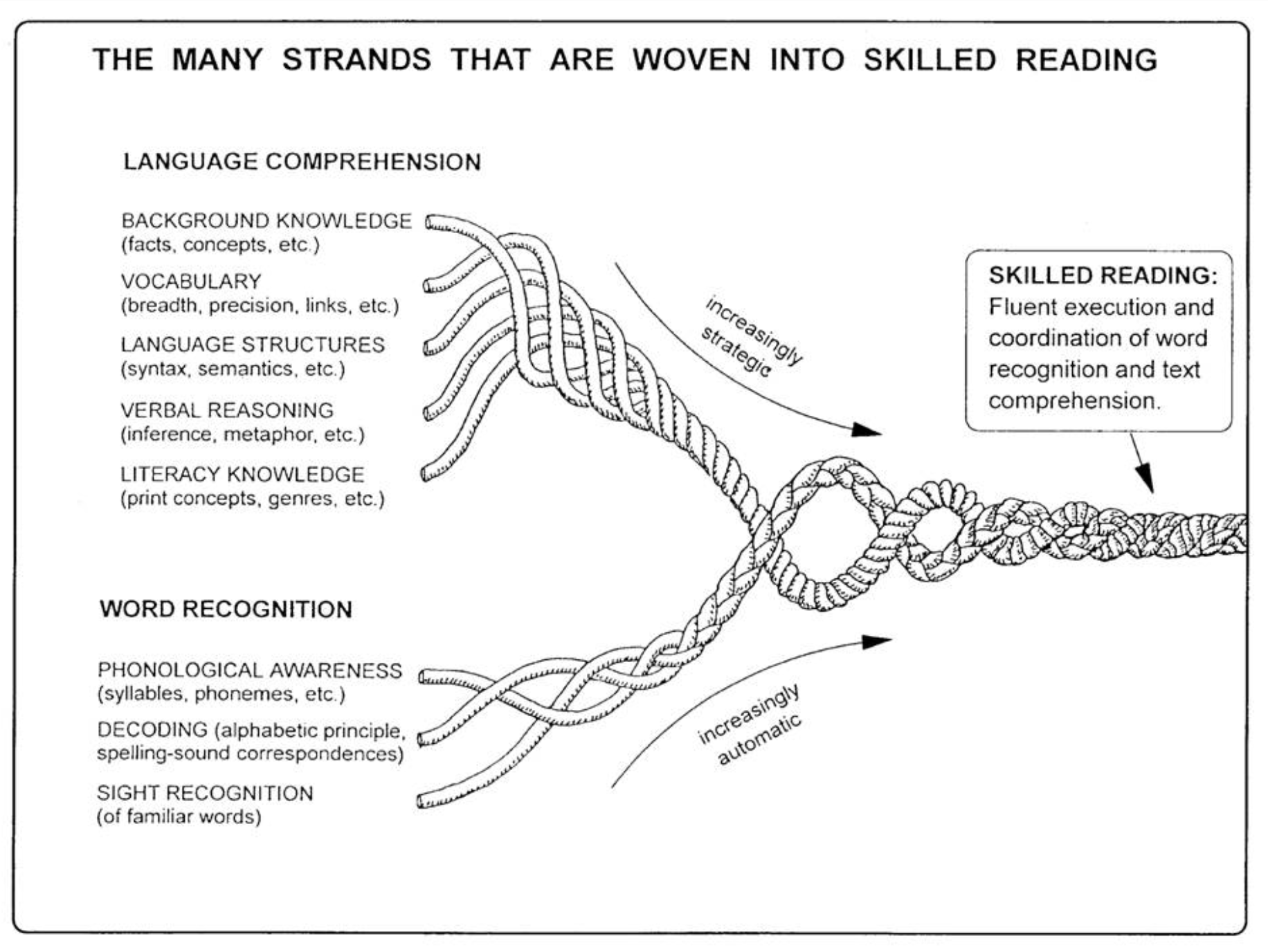The Writing Rope vs. The Reading Rope
Educators who closely follow the science of reading or those who are trained in LETRS® will recognize Scarborough’s Reading Rope*, a visual representation of the different elements of the learning-to-read process for children. According to Dr. Hollis Scarborough, skilled reading can only be achieved when language comprehension and word recognition are effectively used in tandem with one another. The Reading Rope details a structured, systematic framework of instruction with five essential components of reading:
- Phonology/phonemic awareness
- Phonics
- Vocabulary
- Comprehension
- Fluency

The reality is, reading is not a natural process for human brains. We are wired for verbal communication, but learning to read, and write, takes time and mastery of skills. It only makes sense that two of the most important, and difficult, overarching skills for students to acquire go hand in hand.
“Writing is not just an option for young people—it is a necessity. Along with reading comprehension, writing skill is a predictor of academic success and the basic requirement for participation in civic life and the global economy…All students need to become proficient and flexible writers.” (Graham and Perin, Writing Next)
What is the Writing Rope?
Using this same “rope” infographic framework, reading expert Dr. Joan Sedita created a similar metaphor for the five components of writing in her book “The Writing Rope: A Framework for Explicit Writing Instruction in All Subjects.” Sedita states that similarly, five strands should be woven together to achieve skilled writing:
- Critical thinking (generating ideas, writing process)
- Syntax (grammar, punctuation)
- Text structure (patterns of organizations, transition words)
- Writing craft (word choice, literary devices)
- Transcription (spelling, handwriting)
In her book, Dr. Sedita emphasizes that while it is often considered the job of English, language arts, and writing educators to teach these specific writing skills, these five strands should be put into practice in classrooms across all subject areas. Teaching students to write is very much like teaching them to read—it is a group effort across many disciplines to promote the academic progression of students of all abilities.
Strengthening Writing Skills in Your Classroom
As an educator, you’re doing what seems impossible. Teaching students to both read AND write is a huge undertaking especially at a time when historic declines in academic scores in the U.S. are taking place, according to the National Center for Education Statistics (NCES). The work educators do is profound, but we imagine it can also be daunting due to forces beyond your control.
We are rapidly approaching the midpoint of the school year, a good time for a quick pulse check on your current curriculum. A good starting point is to ensure your reading and writing instruction is comprehensive, explicit, and evidence-based. Aligning instruction to research, especially according to the International Dyslexia Association’s Structured Literacy approach, will further your reach in the classroom and put in place a strong foundation for both reading and writing.
*Reading Rope—The image, courtesy of the author, originally appeared in the following publication: Scarborough, H. S. (2001). Connecting early language and literacy to later reading (dis)abilities: Evidence, theory, and practice. In S. Neuman & D. Dickinson (Eds.), Handbook for research in early literacy (pp. 97–110). New York, NY: Guilford Press.